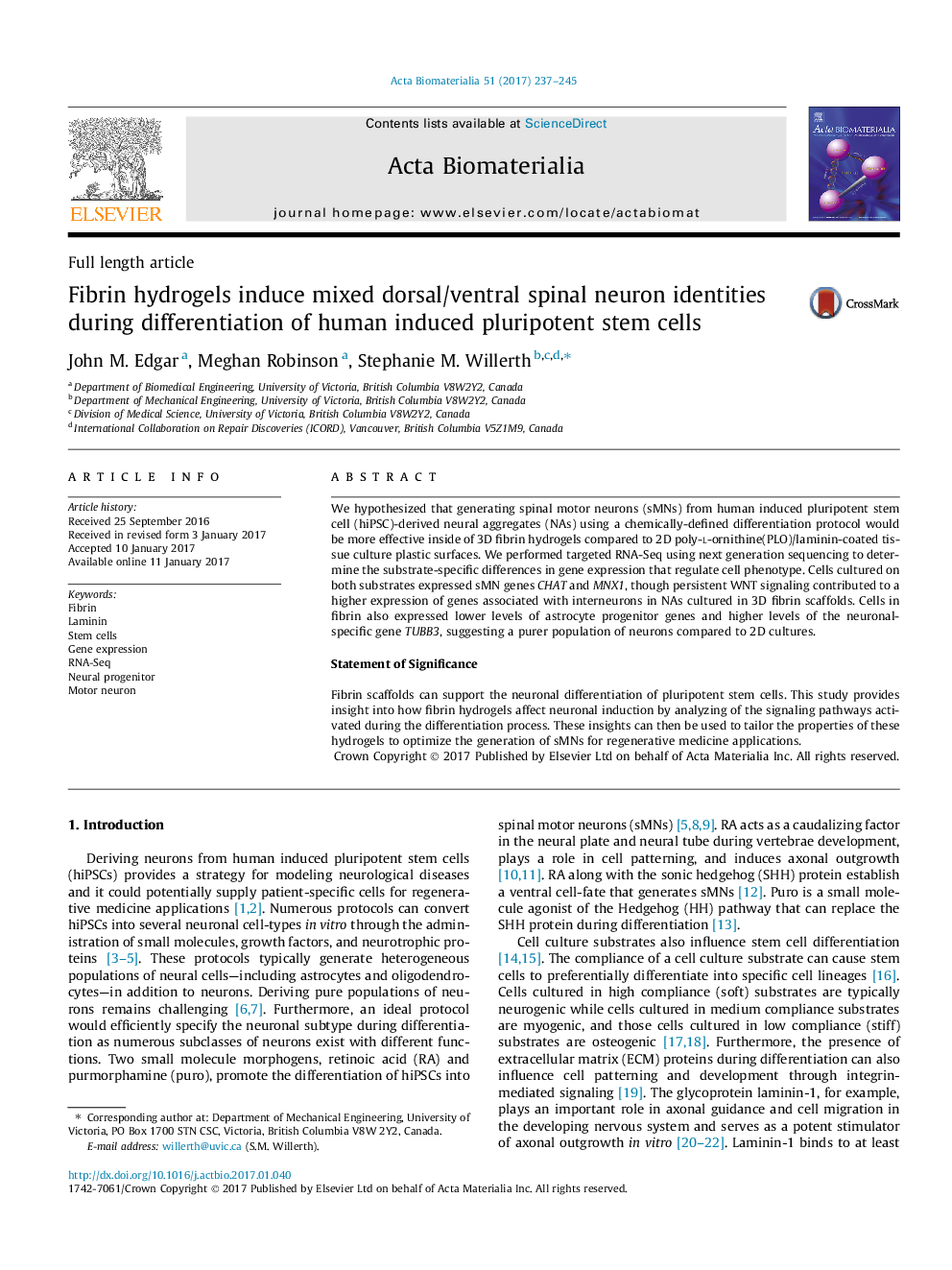| کد مقاله | کد نشریه | سال انتشار | مقاله انگلیسی | نسخه تمام متن |
|---|---|---|---|---|
| 6449480 | 1415935 | 2017 | 9 صفحه PDF | دانلود رایگان |
We hypothesized that generating spinal motor neurons (sMNs) from human induced pluripotent stem cell (hiPSC)-derived neural aggregates (NAs) using a chemically-defined differentiation protocol would be more effective inside of 3D fibrin hydrogels compared to 2D poly-L-ornithine(PLO)/laminin-coated tissue culture plastic surfaces. We performed targeted RNA-Seq using next generation sequencing to determine the substrate-specific differences in gene expression that regulate cell phenotype. Cells cultured on both substrates expressed sMN genes CHAT and MNX1, though persistent WNT signaling contributed to a higher expression of genes associated with interneurons in NAs cultured in 3D fibrin scaffolds. Cells in fibrin also expressed lower levels of astrocyte progenitor genes and higher levels of the neuronal-specific gene TUBB3, suggesting a purer population of neurons compared to 2D cultures.Statement of SignificanceFibrin scaffolds can support the neuronal differentiation of pluripotent stem cells. This study provides insight into how fibrin hydrogels affect neuronal induction by analyzing of the signaling pathways activated during the differentiation process. These insights can then be used to tailor the properties of these hydrogels to optimize the generation of sMNs for regenerative medicine applications.
285
Journal: Acta Biomaterialia - Volume 51, 15 March 2017, Pages 237-245
